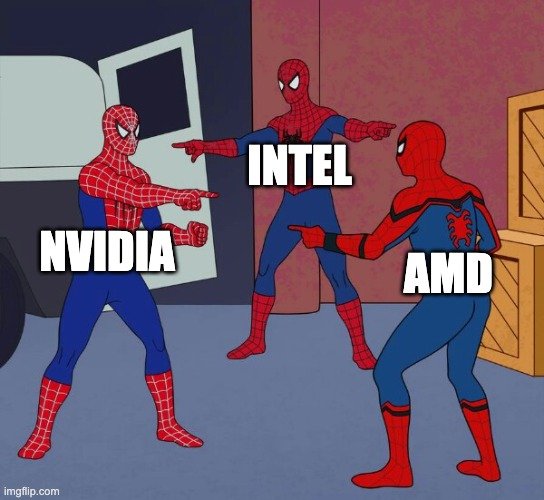Chip Wars!!!
Competition in a free market is one of the key tenets of capitalism. And there is no more competitive market at the moment than Artificial Intelligence (AI). While we hear a lot about the chat bots, API’s, LLMs and the client-facing side - especially given ChatGPT’s takeover of the tech sector’s psyche - the hardware side is often overlooked. Stuff that happens at the chip/server/datacenter level is a little less…. exciting?
Actually, no. When it comes to the demands of AI - particularly for training, processing and inferencing - performance has historically been the key metric. As demand for processing capabilities has exponentially increased, the need for greater efficiency has become key. Which is why three of the largest chip manufacturers - AMD, Intel and Nvidia - have battled it out in the second-half of 2023, producing innovative chip designs for CPUs, GPUs and system on a chip (SoC) products that can maximise processing power, while remaining efficient to run at scale.
In August, Nvidia announced an update to its Grace Hopper Superchip, boosting its performance with additional memory bandwidth. It also invigorated its datacenter-specific offerings with the L40S GPU, while revving its AI Enterprise software suite.
In September, Intel announced that the “age of the AI PC” had arrived with the launch of its Intel Core Ultra range (aka “Meteor Lake”) - that includes a dedicated AI coprocessor - while outlining its 2024 and 2025 roadmap.
Finally, in December, AMD rolled out its most AI-oriented announcement to date, launching a slew of products under the Instinct MI300 range designed to tackle generative AI, Large Language Modelling (LLM) training and inferencing tasks, and supercharge the deployment of High Performance Computing (HPC) and AI workloads.
For developers, datacenter owners and cloud service providers, this was a lot to take on board. And while it will take time to better understand the pros and cons of each offering, the increased choice and range of applications for the new products is welcome. Bear in mind though that Qualcomm and chip designer ARM have also had a busy year, extending the capabilities of their products to enable better price vs. performance ratios for Internet of Things (IoT) devices, and low cost consumer technology.
After a full-on 2H23, 2024 should be no less exciting!

